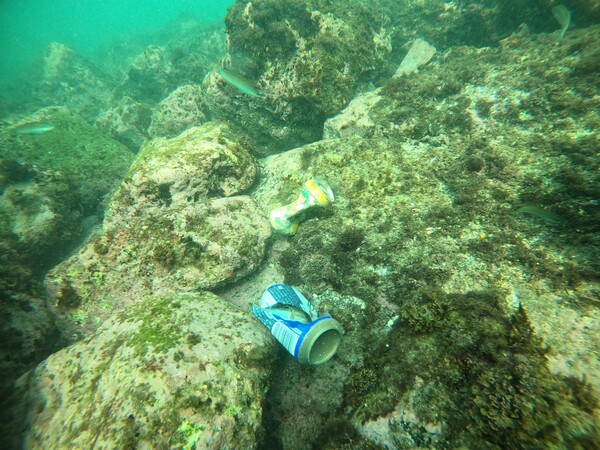HOME
Voices
Garbage ends up in the sea, and makes a huge threat to Jeju Island and its ecosystem
2022.09.27 18:06:00
Jacob Lee
4040

[The Jeju Sea/Photo Credit: Jacob Lee]
Jeju Island has been suffering due to an overload of garbage that ends up in the sea, threatening the whole ecosystem and residents together.
As the island takes in more tourists, this problem has aggravated.
In increased efforts to return to pre-pandemic normalcy, tourism has significantly improved in Jeju after Covid-19.
According to the Jeju Tourism Association, 3.45 million visitors arrived in Jeju in the first week after covid decreased. This was a significant increase compared to the 2.51 million tally from last year.
The total number of arrivals from April 1 to April 3 (Sunday) reached 368,584, with the daily average at 36,858.
Since more visitors means more waste, waste has been increasing exponentially.
In Jeju, much of the waste products are processed at only two incineration plants.
The two incineration plants have been struggling to eliminate the trash overload.
As the plant reaches its maximum capacity, the rest of the trash has been compressed into white cubes. The enormous white cubes are stacked in a landfill, each weighing 900 kilograms.
With the plants unable to keep up with the daily demand, white cubes are created daily; Over 150 white cubes are stacked in the landfills today.
Not only do the white cubes store waste, but the landfills and sea also contain the rest of the unstored trash.
The rest of the waste produced ends up in the seas surrounding Jeju.
Some end up on the shores, some on the surface of the water and some deep in the sea.
NotablyParticularly, the waters surrounding Jeju are heavily contaminated with trash from the island.
From outside the water, the deep blue sea covers the trash hidden underneath.
The trash is invisible and could be neglected for a long time.
Plastic wastes are particularly invisible even under the sea.
Additionally, plastic will not decompose quickly, as it takes about 1000 years to degrade.
All the waste stacks up in the seas, unable to be managed.
As over 20,000 tons of sea waste are produced, only half is collected.
In 2019, marine waste was measured as 11,000 tons.
In 2021, after only three years, marine waste doubled to 21,000 tons.
This pattern has been going on for several years, which is urgent as it significantly affects the ecosystem of Jeju Island. .
One of the main victims of pollution is the sea turtles.
In 2019, 17 turtle carcasses were found on the shores, plastic found inside and outside of their body.
In 2021, 30 turtle carcasses turned up on the shores.
There seems to be a clear proportional relationship between the amount of marine waste the number of sea turtles carcasses.
Another victim is the dolphins.
Dolphins in Jeju are found with human-produced waste in their stomach or on them.
Fish also are found with garbage inside their bodies.
If we don’t find a way to keep our water and island clean, we will be eating garbage tasting seafood soon.
Everyone needs to contribute to stopping this exponential spread of garbage.
After all, we do not want garbage in our fish.

- Jacob Lee / Grade 10
- North London Collegiate School

![THE HERALD STUDENT REPORTERS [US]](/assets/images/logo_student_us.png)
![THE HERALD STUDENT REPORTERS [Canada]](/assets/images/logo_student_ca.png)
